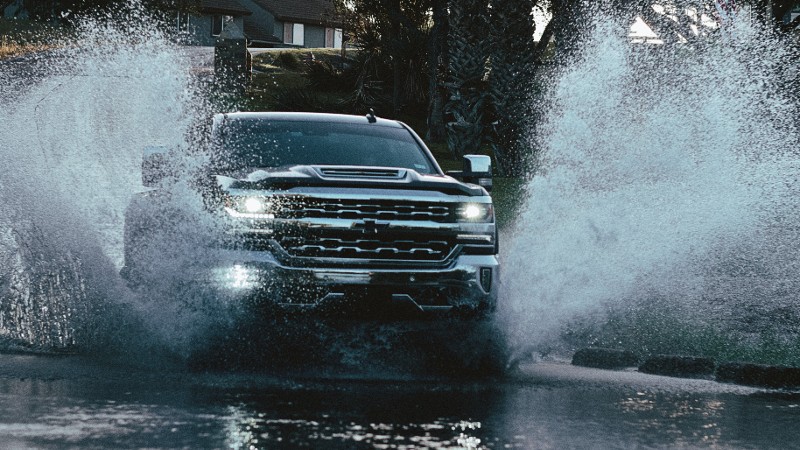Have you ever wondered what can happen when your car goes underwater? Will the engine work properly? How about electric cars? What can happen if they get caught in the middle of a storm?
Conventional cars aren’t waterproof, especially those for water-based operations by police and the military. Waterproofing an engine is costly. Water causes contamination and rust in an engine. Electric cars are less likely to be affected by water.
Driving through high water is not good for your car. Flood flashing regularly or someday makes driving through water inevitable. Even just six inches of water may reach the bottom of a passenger vehicle. This may come with devastating effects on various parts of your car.
The water of about one foot can make your car float, and two feet of water sweep away most vehicles. Flooding hinders visibility on the road, and this makes vehicles lead off the road.
So, driving through water is a bad idea since you never know the condition of the road.
Are Cars Waterproof?
Some cars have special waterproofing on the engine. These are usually for the police and military to allow them to go into the water when chasing criminals. Waterproof cars are not for regular driving since waterproofing an engine is very expensive. ‘
Regular cars are not recommended to go into deep water/Water may go through the air intake to reach the cylinders. When this happens, the engine suffers from hydro locking, rust, and short circuits of its electrical components.
Are Car Engines Waterproof?
We’ve already seen that waterproofed engines are primarily for police and military operations near water. So, there’s no chance of getting a regular car with a water-resistant engine. You must know that water will cause devastating effects when it gets into your engine.
There’s a likelihood of causing hydro locking leading to engine failure. Water in your engine may contaminate the oil, petrol, and transmission fluid. It also encourages electrical faults and rusting of car components. All these problems may cause your engine to malfunction.
Effects of water in your engine include:

Hydrolocking
Water causes engine failure when it gets into the cylinders. The engine burns fuel to generate horsepower that pulls the car forward. Car pistons compress a mixture of oil and fuel inside the cylinders to optimize fuel combustion.
The air/fuel mixture is gaseous, making the pistons compress it seamlessly. The presence of water in the cylinder resists compression. The crankshaft turns the piston normally but meets water instead of an air/fuel mixture.
Carmakers pack the pistons tightly to optimize energy wastage. So, the water won’t have anywhere to escape, yet the energy has to go somewhere. The engine will likely seize and stop, or parts of the combustion chamber may start flying off in severe circumstances.
A powerful engine may bend or break the connecting rods making them blow holes in the engine.
Contamination
Exposing your car to water for some time may make the engine sealants let in water leading to contamination. Oil exposed to water won’t cool or lubricate the vehicle’s moving parts effectively. You may not realize this immediately, but it risks your engine parts.
Contaminated transmission fluid may destroy parts of the transmission.
Electrical Failure
Water and electricity don’t mix. Exposing your car to water may cause electrical components to malfunction. Car circuits are watertight while the leads are bare, making them prone to water exposure.
Soaked distributor caps can’t send electricity to the spark plugs. Water also damages the fuse box leading to engine failure.
Are Electric Cars Waterproof?
Electric cars come with tightly sealed components, making them waterproof. Your car is safe unless you lead it into a body of water. In this case, the excess moisture will trip the circuit breaker to eliminate the risk of an electric shock.
Charging stations of electric cars are waterproof to allow charging in the rain. You can even drive an electric car through the washer like any other vehicle. Just don’t let the windows or sunroof open. Water damages fittings, interior fixtures, switches, and dials.
Never attempt to drive an electric car in a flow. About 300mm of flowing water is enough to float a car. An electric car performs better than a regular car while wading through water. For example, a Jaguar I-Pace has 500mm wading depth and other safety features during a flood.
Electric cars don’t have air intake that may be affected by water leaving the propulsion system intake unless in conventional cars. However, precautions are necessary when driving through water, whether in an electric or conventional car.
Final Thoughts
It’s not good to risk any car in the water. Conventional cars have air intakes that may pass water into the engine leading to devastating problems. Electric cars don’t have air intake and are less prone to water exposure since many components are watertight.

